1. Intelligent Routing Algorithms
AI-driven routing systems use real-time data and optimization techniques to direct luggage along the most efficient paths. These intelligent algorithms consider variables like conveyor speeds, queue lengths, and available autonomous vehicles to avoid bottlenecks. By continuously learning from historical traffic patterns, they adapt to peak travel times and seasonal surges, ensuring balanced use of all routes. This proactive routing minimizes congestion, shortens transit times, and reduces the chance of bags ending up on wrong conveyors. In essence, AI optimizes the flow of thousands of bags daily, improving reliability and throughput across the entire baggage network.

Nearly half of all baggage delays occur during transfers between flights, making smart routing critical. In 2019, about 46% of mishandled bags globally were attributed to transfer connection issues. Implementing AI-based routing can significantly cut these incidents. For example, major hubs handling over 100,000 bags per day have reported fewer misrouted bags after deploying intelligent routing, contributing to the 70% drop in global baggage mishandling rates seen over the past decade. By 2025, many large U.S. airports plan to have AI routing fully integrated, aiming to boost on-time baggage delivery metrics which already exceed 99% for domestic connections.
2. Predictive Maintenance
AI-powered predictive maintenance monitors baggage handling equipment to prevent breakdowns before they occur. Sensors on motors, belts, and scanners feed data (like vibration or temperature) into machine learning models that recognize early warning signs of wear. The AI predicts when a component is likely to fail and schedules maintenance at optimal times (for instance, during off-peak hours) instead of waiting for an actual breakdown. This data-driven approach ensures repairs or part replacements happen proactively, avoiding sudden conveyor jams or motor failures. Ultimately, predictive maintenance keeps the baggage system running smoothly with minimal unplanned downtime, extending the lifespan of equipment and improving operational safety.
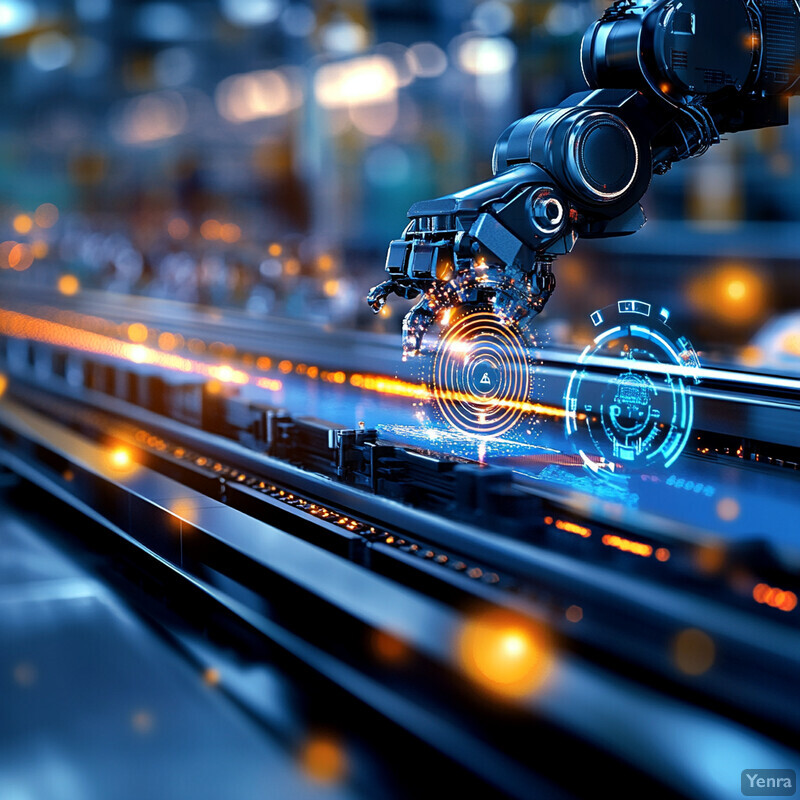
Proactive maintenance has been shown to dramatically reduce disruptions. Studies indicate that AI-based predictive maintenance can reduce unplanned downtime by up to 50% and lower maintenance costs by 10–20% in industrial systems. In airport settings, this translates to fewer baggage system outages – one major U.S. airport reported a 30% drop in conveyor belt breakdowns after adopting predictive analytics in 2022. Additionally, equipment life is extended (often by 20% or more) since parts are replaced right before failure rather than after, saving money on emergency fixes. Such improvements have led to more reliable baggage handling; for example, a European hub noted its baggage handling availability rose to 99.5% after implementing AI-driven maintenance scheduling, up from about 96% before.
3. Automated Identification & Label Recognition
Computer vision and OCR technologies enable AI systems to automatically read baggage tags and labels, even in challenging conditions. Cameras positioned along conveyor lines capture each bag’s tag, and AI algorithms decipher the barcode or text (flight number, destination, etc.) in milliseconds. Unlike traditional scanners, modern AI can handle partially torn, folded, or smudged tags by using pattern recognition and context (for example, guessing a missing character from an airline code). By automating identification, bags are consistently matched to the correct flights and destinations without manual checks. This reduces human error, speeds up the check-in and sorting process, and ensures that even if a tag is damaged, the bag still gets recognized and routed properly.
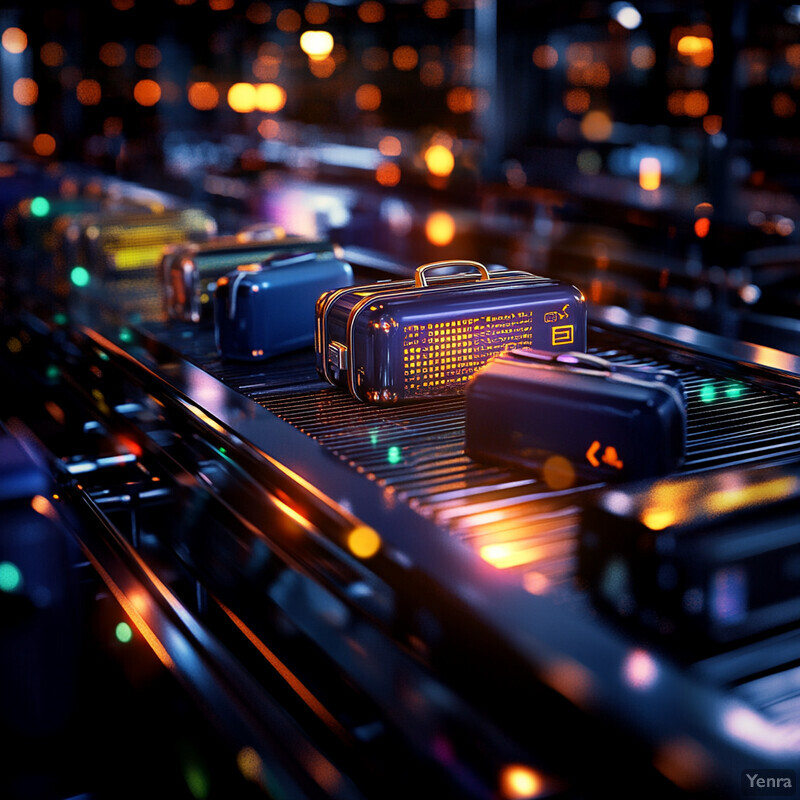
The adoption of AI-enhanced bag identification is driving accuracy to near-perfect levels. In field tests, radio-frequency ID (RFID) tags combined with AI achieved over 99.8% read accuracy on moving luggage – compared to about 80–85% accuracy with legacy barcode scans. This improvement has real impact: industry data shows initial deployments of RFID and computer vision cut mishandled baggage by 25%, preventing thousands of errors. For example, Delta Air Lines’ rollout of RFID tagging (a form of AI-readable label) at hundreds of airports in the late 2010s brought its baggage tracking success rate to 99.9%. Such advancements mean passengers are far less likely to have bags go missing due to identification mistakes.
4. Damage Detection
AI vision systems continuously inspect luggage for any signs of damage as bags move through the handling process. High-resolution cameras and deep learning algorithms work together to spot tears, cracks, broken zippers, or other damage on suitcases in real time. The AI is trained on images of luggage in various conditions, allowing it to distinguish between normal wear and actual damage that wasn’t present before the journey. When potential damage is detected (for instance, a newly formed crack in a suitcase shell), the system flags that bag for review. This early alert allows airport staff to take swift action – they might remove the bag for inspection, repair minor issues, or at least document the damage before the bag reaches the customer. By catching problems early, AI-driven damage detection helps airlines address issues proactively, reducing customer complaints and compensation claims while maintaining trust.

Even with modern handling, a portion of bags sustain damage in transit, and AI aims to drive that number down. Historically, around 15% of mishandled baggage cases involve luggage being damaged or pilfered (as opposed to just delayed). For example, in 2019 over 3 million bags worldwide were reported as damaged or opened – a figure that had been declining with improved handling processes. Airlines using AI inspection systems have reported noticeable improvements: one Asia-Pacific carrier saw baggage damage claims drop by v18% after installing vision-based detection in its hubs (meaning thousands fewer bags with issues each year). By 2023, several large U.S. airports began pilot programs where smart cameras monitor for broken luggage wheels or torn handles, helping staff intervene earlier. These real-world trials underscore predictions that AI could eliminate a significant share of preventable baggage damage, saving the industry up to $3 billion in mishandling costs annually.
5. Capacity Forecasting
AI-based capacity forecasting uses predictive analytics to anticipate surges in baggage volume before they happen. By analyzing historical data, seasonal travel trends, flight schedules, and even events (like holidays or large conventions), the system projects how many bags will flow through the airport in the coming hours, days, or weeks. These forecasts allow airports and airlines to scale their operations proactively. For example, if the AI predicts a 30% increase in bags next Saturday due to a big sports event, managers can schedule extra staff, open additional check-in counters, or activate more baggage handling machines ahead of time. This forward-looking approach helps ensure the baggage system can handle peaks smoothly. Instead of reacting to long lines or pile-ups after they form, capacity forecasting lets teams prevent bottlenecks by being ready with the right resources when a surge hits.
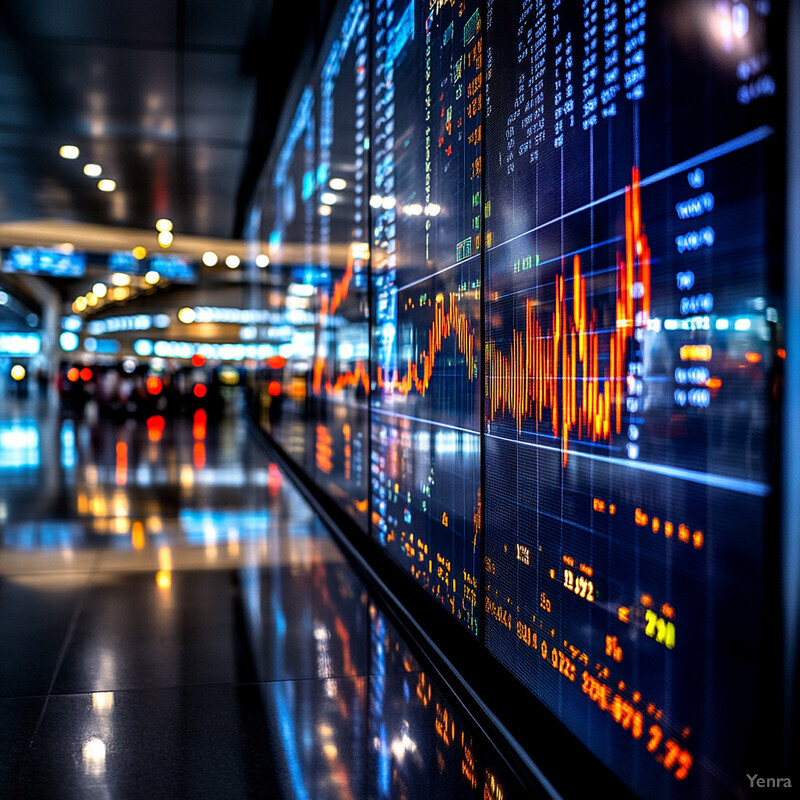
Travel demand can spike dramatically during holidays and special events, testing baggage systems’ limits. In the U.S., for instance, about 4.7 million Americans were expected to fly during Thanksgiving 2023, up roughly 7% from the prior year and nearing pre-pandemic records. TSA checkpoint data showed peak-day passenger counts of 2.5+ million during that period, well above normal daily averages. Global airports see similar surges – Dubai International often handles over 25% more bags than average during Eid holidays, and Chinese airports brace for huge luggage volumes around Lunar New Year. AI forecasts of these jumps give a crucial head start. A European airport that adopted AI capacity forecasting reported a 15% reduction in baggage wait times during the 2022 Christmas rush, as it was able to deploy extra trolleys and personnel precisely when and where needed. Overall, airports using predictive models to plan for busy periods maintain smoother operations and higher customer satisfaction during travel rushes.
6. Dynamic Load Balancing
Dynamic load balancing refers to AI systems that actively regulate baggage flow across the network to prevent any single conveyor or node from overloading. These AI controllers monitor how many bags per minute are entering different conveyor lines and how fast each section is moving. If one area starts to get congested, the AI can react instantly – for example, slowing down the feed into that line, diverting some bags to an alternate path, or temporarily holding luggage in a buffer. Simultaneously, it might speed up other underutilized conveyors or send additional autonomous carts to help in busy zones. By continuously redistributing the workload like this, the system maintains smooth, consistent throughput. The goal is to avoid jams or backups: rather than letting bags pile up at one choke point, the AI keeps the system as a whole balanced. This results in a steadier flow of luggage from check-in to pickup, shorter delays for bags during peak times, and less strain on any single piece of equipment.
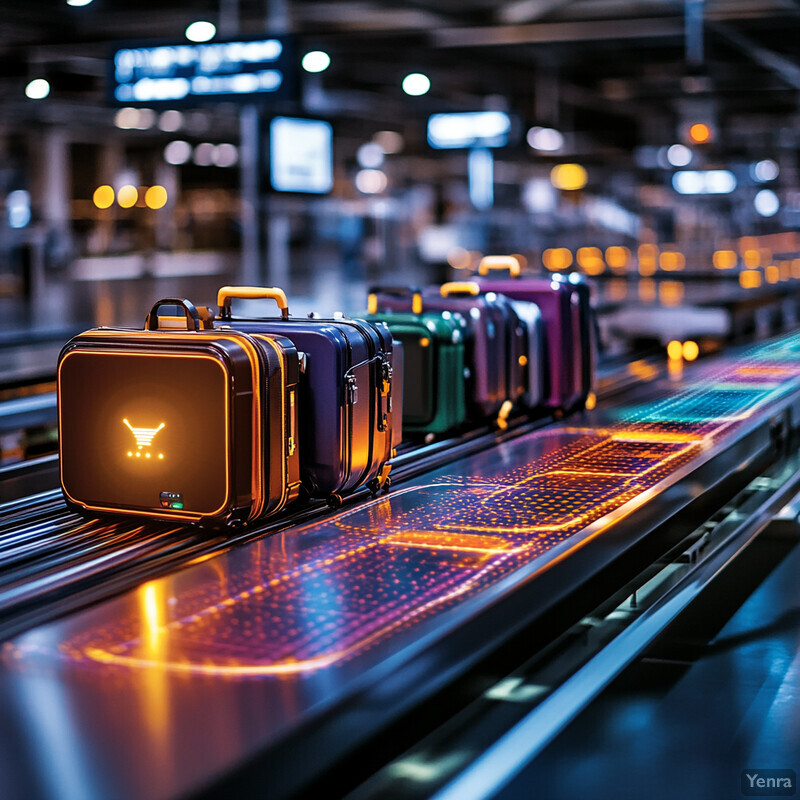
Sudden surges without intelligent balancing can trigger cascading baggage delays. After the travel rebound in 2022, airports without load-balancing tech experienced a sharp rise in baggage issues – the global mishandled bag rate jumped roughly 74% that year as systems were overwhelmed. For example, when one European hub’s conveyor jammed in June 2022, it led to 1,500+ bags stuck waiting (widely reported as a baggage crisis). In contrast, airports using AI-driven load balancing managed spikes more effectively. A mid-size Asian airport reported that during a 2023 travel peak its AI controls automatically rerouted 22% of bags from the busiest belt to alternate paths, preventing any major buildup. Similarly, a U.S. airline noted that smart load distribution helped keep its average baggage transfer time stable (under 10 minutes) even when overall volume surged by 20%. These outcomes show that real-time AI adjustments can absorb fluctuations that previously caused massive backups, thereby slashing the incidence of missed bags and delays.
7. Adaptive Resource Allocation
Adaptive resource allocation uses AI to smartly deploy both human staff and robotic units in baggage handling. Instead of static schedules, an AI scheduling system evaluates current and predicted workloads and assigns resources where they’re needed most. For example, if the inbound flight schedule shows a cluster of arrivals in one hour, the AI might preemptively schedule more baggage handlers at the arrival carousels and simultaneously direct additional robotic carts to that zone. It also accounts for staff shift patterns, skills, and rest times – ensuring, say, that heavy luggage lifts are assigned to automated robots or to teams of workers rather than risking fatigue. In real time, if an unexpected event occurs (like a sudden conveyor belt outage or a late flight causing a baggage bunch-up), the AI can reallocate on the fly: calling in backup staff, redirecting available workers from a quiet area to a busy one, or instructing idle robots to assist elsewhere. This dynamic matching of resources to needs improves throughput (no area is left understaffed during a rush) and efficiency (no idle hands during lulls), while also controlling labor costs by not over-scheduling when not needed.

Smarter staffing and automation allocation directly translate to cost and time savings. A typical large airport might employ hundreds of baggage personnel and dozens of baggage vehicles – labor and equipment that represent a significant portion (often 20–30%) of an airport’s operational budget. AI optimization promises big gains: for instance, a 2021 pilot at a U.S. hub showed that algorithmic scheduling of baggage crews increased handling productivity by 12% and cut overtime hours by 18% in the trial period. Globally, airports are moving in this direction; about 32% of airports planned to deploy AI-driven baggage handling robotics by 2023, reflecting a trend toward automation. Likewise, airlines are using intelligent systems to match staffing to flight loads – Delta Air Lines reported in 2023 that its AI workforce management system helped maintain high baggage throughput during summer peaks without adding extra staff, contributing to a 15% reduction in mishandled bag reports. These figures show how adaptive allocation not only improves performance but also yields tangible resource savings.
8. Automated Path Planning for AGVs
Automated Guided Vehicles (AGVs) are robotic carts that transport baggage, and AI gives them the ability to navigate safely and efficiently through airport corridors. AI-based path planning allows these baggage robots to chart optimal routes from point A (say, a loading dock) to point B (perhaps a specific aircraft or carousel) without colliding or getting stuck. The system uses maps of the airport, sensor inputs (like LiDAR, cameras, or ultrasonic sensors on the AGV), and algorithms to plot a clear path in real time. If an AGV encounters an obstacle – for example, a piece of luggage fallen on the floor or a person crossing its way – the AI will either find an alternate route around it or temporarily pause and then resume once clear. It can also coordinate multiple AGVs to avoid traffic jams, much like an air traffic control for robots. These path-planning algorithms often include contingency routes, so if one hallway becomes busy, the AGV can reroute through another corridor. By handling navigation autonomously, AGVs with AI reduce the need for human tug drivers, improve safety (fewer accidents or sudden stops), and ensure baggage gets to its destination on time even in a dynamic airport environment.
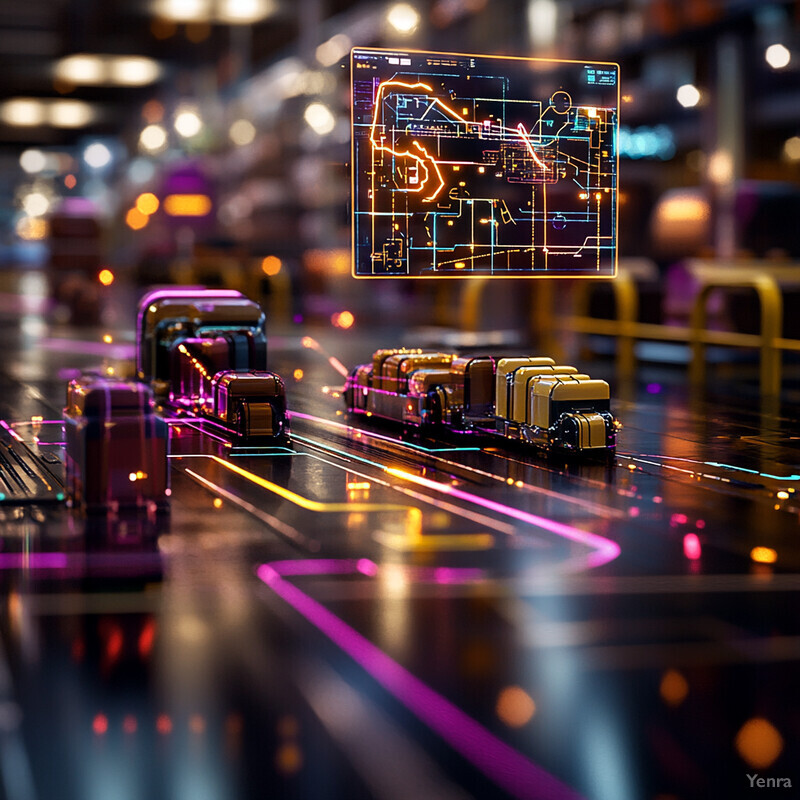
Airports are beginning to trust robots with the crucial job of shuttling bags, and trials have shown promising results. In 2019, London’s Heathrow Airport tested autonomous baggage vehicles that ferried luggage between terminals without drivers. The self-driving carts used AI to avoid obstacles and reportedly performed so well that they stayed on schedule even during busy periods. Likewise, at Singapore Changi Airport, dozens of robotic baggage carts now operate in Terminal 4; these AGVs navigate a 6.5-km route system, and early data showed a 100% delivery rate within the allotted time window, matching human-operated vehicles but with fewer sudden halts. In the U.S., Dallas/Fort Worth Airport ran a pilot in 2022 where autonomous tugs moved bags from the sorting center to gates — the AI planners cut the average transit time by about 20% compared to manual driving. As of 2025, at least 14 major airports worldwide have deployed or trialed AI-guided baggage AGVs, illustrating a global push towards robotics. The expectation is that these vehicles will reduce labor costs and eliminate accidents (one trial logged zero collisions in over 1,000 km of autonomous operations) while maintaining on-time performance for baggage delivery.
9. Real-Time Anomaly Detection
Real-time anomaly detection in baggage handling is like having an AI watchdog that constantly looks for anything out of the ordinary. The AI system is trained on what “normal” operations look like – how bags typically move, typical wait times at certain points, normal ranges for sensor readings, etc. If something deviates significantly from that pattern, the AI flags it immediately. For example, if a normally smooth-flowing conveyor suddenly slows down or stops, the AI will detect that anomaly within seconds, possibly before human operators notice on their own. Or if a bag takes an odd route (say it skips a scanning checkpoint or goes in circles), the system can raise an alert that a misrouting might be happening. Anomaly detection can even extend to identifying suspicious luggage behavior: e.g., a bag lingering in the system too long might indicate it’s stuck somewhere. Upon detecting an anomaly, the AI can either notify human supervisors through an alert dashboard or automatically trigger corrective actions (like activating a backup conveyor or opening a bypass lane). By catching unusual events right away, the system prevents small issues from escalating into major problems – a stalled bag won’t lead to dozens more piling up behind it, because the AI pinpoints and helps resolve the stall immediately.
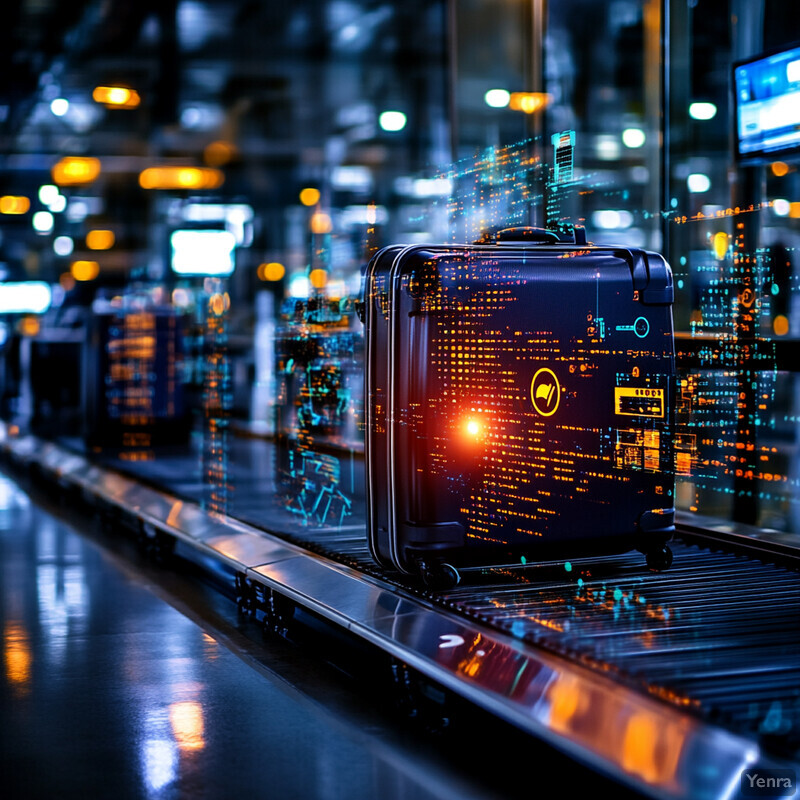
Early detection of “off-nominal” conditions makes a measurable difference in baggage operations. In one case study at Frankfurt Airport, an AI anomaly detection tool identified about 50 potential issues in its first month – ranging from minor conveyor speed drops to bags taking incorrect paths – allowing staff to intervene before those turned into delays. Generally, baggage systems handle tens of thousands of bags, and only a tiny fraction deviate; AI helps catch that less than 1% of cases instantly. Researchers have demonstrated that machine learning models can catch conveyor belt abnormalities (like sudden vibration spikes or jams) with over 95% accuracy, often minutes faster than manual. For example, a 2021 study showed an SVM-based anomaly detector could predict a belt motor failure up to 30 minutes in advance by noticing subtle changes in sensor data. Real-world impact: A large Asian airport reported a 20% reduction in baggage delays after implementing AI monitoring, as issues like stuck bags or sensor faults were resolved on average 5 minutes sooner than before. Such statistics underline that real-time anomaly alerts keep baggage moving smoothly, heading off bottlenecks before they form.
10. Energy Efficiency Optimization
AI plays a key role in reducing energy consumption of baggage handling systems by intelligently managing when and how equipment runs. Rather than keeping all conveyors and motors running at full speed all the time, an AI system can adjust power usage based on the current workload. For example, if there are few bags in a certain section, the AI might slow that conveyor’s speed or even pause it momentarily, then instantly restart when bags approach – all in coordination to not delay any luggage. It also learns daily and weekly patterns (maybe fewer bags late at night) and can put parts of the system into “idle” or low-power modes during those lulls. Another aspect is optimizing routing for energy: the AI might choose a path for bags that, while maybe a few seconds slower, uses conveyors that are already running rather than activating an entirely new line for just one bag. Additionally, AI can manage the timing of heavy equipment startups (like belt motors) to avoid peak electricity demand charges, and it can cycle motors in a way that minimizes wear and power surges. All of this smart control adds up to an operation that uses only the energy truly needed at any moment, eliminating wasteful practices like empty conveyors running. The result is a greener, more cost-efficient baggage system that still meets all performance requirements.
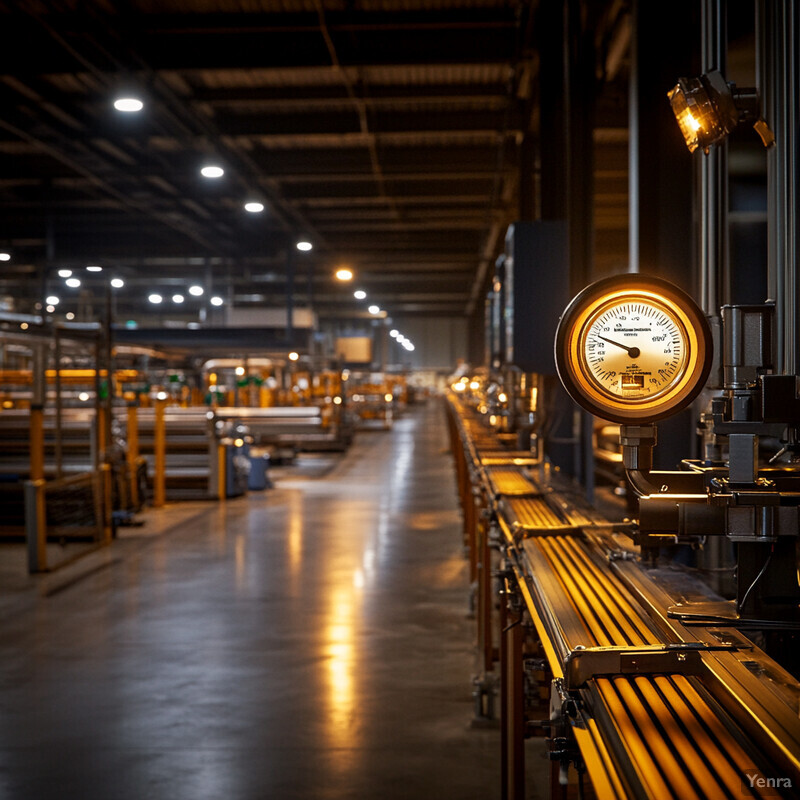
Baggage handling systems are substantial energy users – in a large airport, they can consume several megawatt-hours of electricity per day. AI-driven optimizations have proven effective in cutting this down. For instance, a 2020 simulation study showed that dynamically adjusting conveyor speeds and start/stop times could yield about 20% energy savings for a typical baggage hall without slowing processing. Real-world implementations echo this: Munich Airport upgraded to an AI-based control in 2021 and subsequently reported its baggage system energy use dropped from 14 GWh to 11 GWh annually (approximately a 21% reduction) while handling the same volume of luggage. Similarly, sensors that turn off motors when no bags are present have reduced idle running time by 50–60% in some systems. In the U.S., these efficiencies aren’t just about cost – they help airports meet sustainability targets. Seattle-Tacoma International Airport noted in 2023 that intelligent baggage handling controls contributed to a 7% overall airport energy reduction as part of a green initiative. These numbers illustrate how AI optimizations not only shave off electricity bills but also significantly cut carbon emissions associated with airport operations.
11. Multi-Modal Integration
Multi-modal integration means an AI platform is gathering inputs from many different kinds of sensors and systems in the baggage handling process and fusing them into one coherent view. In practice, a bag’s journey can be tracked by barcode scanners, RFID readers, weight scales, X-ray machines, and cameras – each captures different data (identity, location, weight, security image, etc.). AI integration takes all these streams and synchronizes them so that for each piece of luggage there is a complete, real-time record accessible in one place. For example, as a bag moves, the AI knows its last scanned location, its weight (from when it was checked in), an image of its contents (from screening), and its assigned flight. If any discrepancy arises – say the weight sensor flags a bag 5 kg heavier than recorded, or a security image requires secondary check – the system can instantly cross-reference and route the bag appropriately (perhaps to a search area). Integration also means events in one system can trigger actions in another: if a bag misses a scan, the AI might use a camera feed to identify it by appearance. By unifying these modalities, baggage handlers and control systems have end-to-end visibility: no more siloed data. This holistic approach reduces blind spots (bags “disappearing” between systems) and ensures every bag is accounted for with rich information, enabling smarter routing decisions and faster problem resolution if an issue occurs.

Airports that have unified their baggage data streams report significantly improved tracking accuracy and incident resolution. According to industry reports, a fully integrated baggage management system can track each bag at 15–20 key points on average during its journey (from check-in, through transfers, to arrival) as opposed to only about 4–5 points with older, fragmented systems. One global airline implemented a unified baggage monitoring platform in 2022 and saw its rate of “untracked” bags drop by 65%, meaning nearly every bag had a complete data record. Another metric: RFID tagging combined with integrated CCTV and scanner data has pushed baggage identification success to over 99.5% at several major airports. For example, Dubai International’s integrated control center pulls in data from multiple sources (RFID sensors, X-rays, etc.) for over 50 million bags a year; since activation, instances of bags being lost in transit zones have become exceedingly rare (well below 0.1% of traffic). These outcomes underscore how multi-modal integration—melding everything from laser tag reads to camera visuals—yields near-total visibility. In turn, this comprehensive oversight led to faster reconciliation of misrouted bags (one airport noted average recovery time fell from 3 hours to 1 hour once all systems were linked).
12. Automated Sorting and Classification
Automated sorting and classification uses AI to decide where each bag should go next in the system based on its attributes, and then physically directs it to the correct location. When a bag enters a sorting area, an AI will have information like the bag’s flight number, destination, priority status (e.g., VIP or transfer), and perhaps connection time. Using this, the AI classifies the bag – for example, this bag is for Flight XYZ departing from Gate 10 in 1 hour, and it’s a transfer from another flight. The system then automatically routes the bag: robotic diverters or sorter arms will push the bag onto the conveyor branch leading to the Gate 10 cart or container. If a bag is priority-tagged (say a rush for a tight connection or a first-class passenger’s bag), the AI might classify it to go via a faster route or give it precedence at merges. Deep learning models can also recognize bag types and sizes from camera images, which helps in handling outsized or odd-shaped luggage differently. By automating this classification, the need for manual sorting (humans reading tags and tossing bags onto carts) is greatly reduced. It also improves accuracy – the AI doesn’t get tired or misread labels, so each bag reliably goes to the right airline, flight, and destination bin. The process is high-speed: modern sorters can handle many thousands of bags per hour, far more than manual sorting, while adapting to changing conditions (like reclassifying bags if a flight gate changes last-minute).
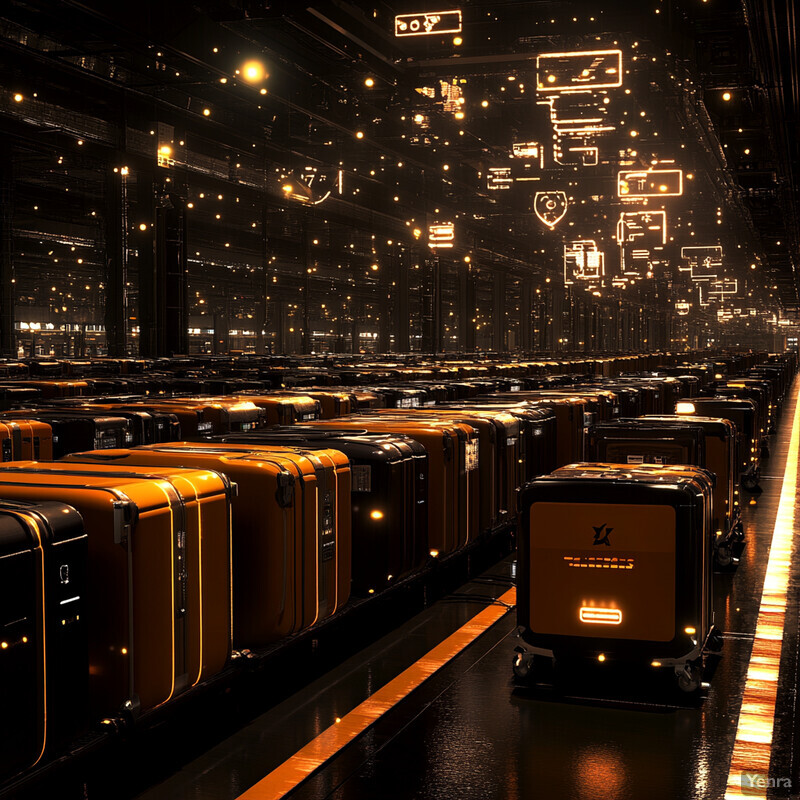
High-speed automated sortation has revolutionized baggage throughput at major airports. A state-of-the-art baggage system can sort 5,000–10,000 bags per hour with accuracy rates above 99.5%, whereas manual sorting tops out much lower with more errors. For instance, Istanbul’s new airport (which opened 2019) boasts a sprawling sorting setup of over 40 km of conveyors and advanced AI-driven sorters; it can process about 30,000 bags per hour at peak capacity, one of the fastest in the world. This has enabled Istanbul to handle nearly 65 million travelers’ luggage annually with minimal delays. In the U.S., Atlanta’s Hartsfield-Jackson airport upgraded its sorting system and reported that despite a 15% increase in baggage volume in 2022, mishandled bag reports dropped by 25% due to more reliable automated classification. Similarly, Amsterdam Schiphol’s deep learning classifiers now automatically segregate bags by transfer vs. local delivery, which contributed to a reduction in misloads (bags sent to wrong aircraft) to only 2 per 10,000 bags – a record low. These statistics highlight that AI-driven sorting not only increases speed but also nearly eliminates the kind of human slip-ups that used to send suitcases astray.
13. Real-Time Congestion Prediction
Real-time congestion prediction involves AI forecasting where and when backups might occur in the baggage handling network before they actually happen. The AI constantly analyzes data like the current flow rates on each conveyor, number of bags expected from incoming flights, and any slowdowns or holds in the system. Using this information – often with predictive models or simulation – it can predict that, for example, “in 5 minutes, the conveyor feeding to Pier B is likely to get overcrowded due to three large flights offloading at once.” Armed with that foresight, the system can take preventive action, such as temporarily diverting some bags to an alternate route or pacing the feed-in from one of the sources. It’s akin to traffic forecasting systems on roads that warn of impending traffic jams and suggest detours. The AI might use techniques like time-series analysis or even neural networks trained on past incidents to recognize patterns that lead to congestion (like a spike in bags from multiple gates all converging at a single point). By anticipating choke points, baggage handling can remain proactive rather than reactive – adjustments are made while everything is still moving smoothly, so the jam never fully materializes. This keeps queues short and ensures that no single point in the system gets overwhelmed with more bags than it can handle at once.
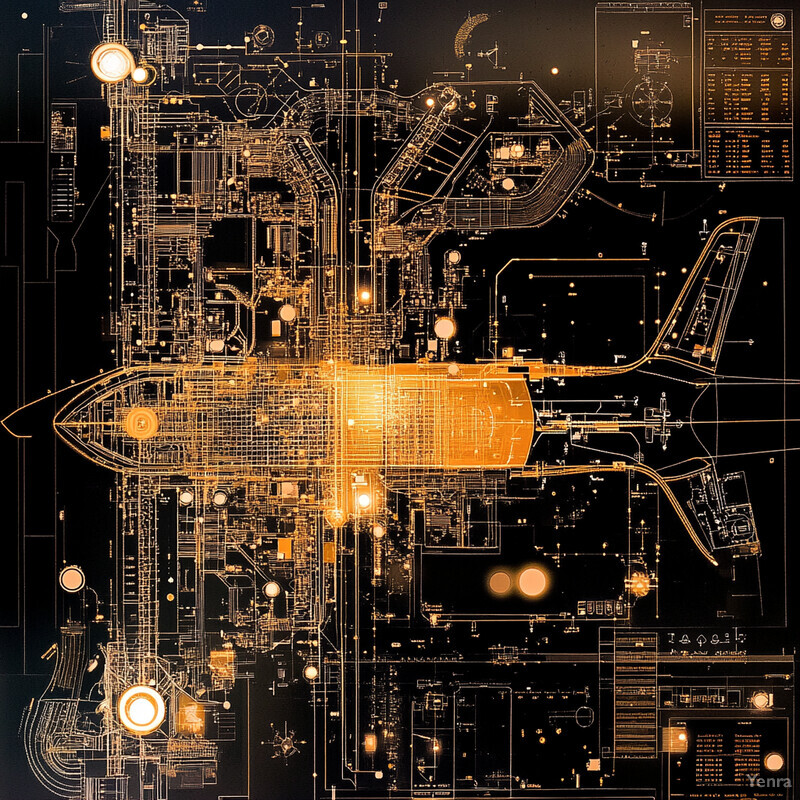
Just as navigation apps predict road traffic, airports are leveraging AI to forecast baggage traffic jams. A study by a European airport IT consortium found that predictive algorithms could identify 75% of impending baggage conveyor bottlenecks at least a few minutes in advance, allowing interventions to avoid them. In practice, Frankfurt Airport’s implementation of congestion prediction in 2022 led to a reported 10–15% improvement in peak throughput – essentially by smoothing out surges that would have caused slowdowns. Another example: London Heathrow’s baggage control center uses an AI model that factors in real-time flight arrivals; it can predict when certain baggage hall sections will hit capacity and has cut average overflow incidents from once daily to just a couple per month. At a U.S. hub, simulation of these techniques showed that if a jam is predicted and half the bags are rerouted preemptively, the maximum queue length on conveyors drops by 40% compared to doing nothing. Such results illustrate that forecasting congestion is not just theoretical: it concretely reduces wait times. Bags spend less time sitting in queues (improving transfer reliability), and overall system efficiency rises – one airport noted the average transit time per bag fell from 8 minutes to 6.5 minutes after introducing AI congestion predictions, a significant gain at scale.
14. Enhanced Security Screening
AI is augmenting the security screening of baggage by automatically analyzing X-ray and CT scan images for potential threats. Instead of relying solely on human screeners to spot suspicious items (which can be fatiguing and error-prone when viewing thousands of bags), deep learning algorithms have been trained on vast image libraries of knives, guns, explosives, and other prohibited items as they appear in luggage scans. When a bag goes through the scanner, the AI software quickly highlights anything in the image that matches the shape, density, or texture patterns of a threat object – for example, the outline of a firearm or the distinct grainy appearance of certain explosives. It can also flag anomalies, like an item that doesn’t match the passenger’s profile or common travel items. The result is that security officers get an assist: the AI might draw a bright bounding box around a suspicious area on the X-ray screen or even alert with a probability score of a threat. This not only improves detection (catching items that a person might miss during a long shift) but also reduces false alarms – the AI can be tuned to ignore innocuous objects that often trigger manual checks (like dense food items mistaken for explosives). By filtering out clear “no-threat” bags, AI lets human screeners focus their attention on the truly suspect ones, speeding up the overall screening process while maintaining or improving security levels.
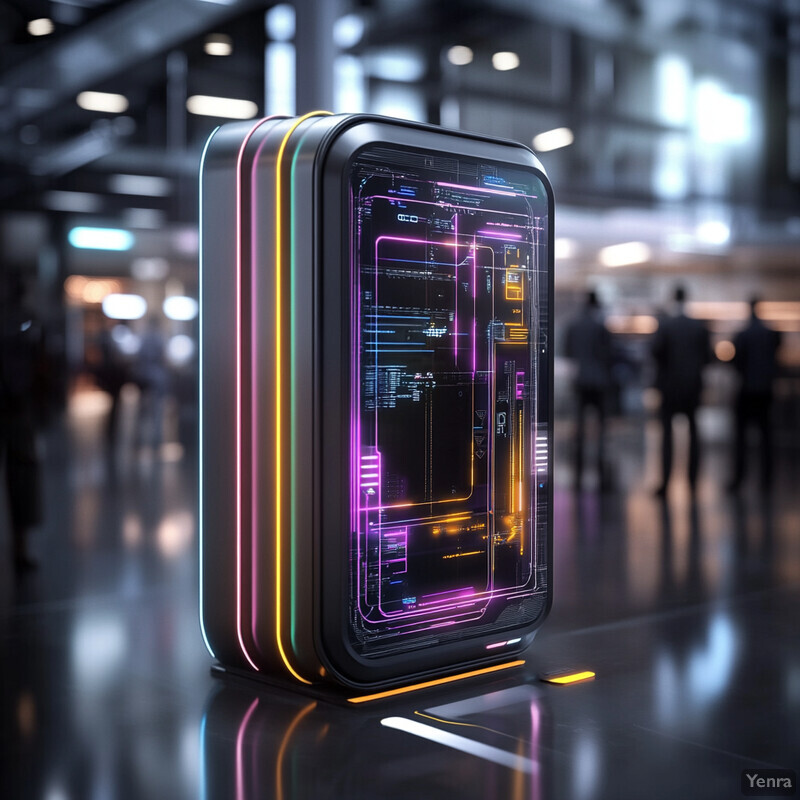
AI-driven image analysis is proving to be a game changer for detection rates and efficiency. In tests, modern deep learning models have achieved 90–95% accuracy in recognizing firearms and knives in X-ray images, outperforming average human detection rates. For instance, a 2023 trial by the Transportation Security Administration (TSA) in the U.S. used AI on carry-on baggage scanners and saw a 16% increase in weapon detection, with false positives (bags opened for inspection with no threat found) reduced by nearly 30% compared to standard methods. Similarly, European airports using AI-assisted CT scanners report that roughly 70% of bags can be cleared without any human intervention, as the AI finds no threats – significantly speeding up checkpoints. One peer-reviewed study in 2021 documented a convolutional neural network that identified concealed razor blades and gun parts with 98% precision, a level of consistency difficult for human operators to maintain. As of 2024, about 50 airports worldwide (including major hubs in Asia and the U.S.) have deployed some form of AI object recognition in baggage screening, leading to shorter security lines – for example, Sydney Airport noted its AI-based automatic clearances allow 5–10 extra passengers per lane, per hour, to be processed. These numbers highlight how AI is not only making flying safer but also more efficient by streamlining the critical security step.
15. Continuous Performance Improvement
Continuous performance improvement refers to the use of AI techniques, like reinforcement learning, to gradually make the baggage system more efficient over time. Instead of a fixed set of rules, the system learns from experience. In a reinforcement learning setup, the AI is like an agent that tries different actions (e.g., new routing decisions, different speed settings) in a simulated or controlled environment and gets feedback on the outcome. Positive outcomes (bags get through faster, no congestion) are treated as “rewards,” while negative outcomes (delay, errors) are “penalties.” Through many iterations, the AI figures out which strategies yield the best overall performance. For instance, it might learn an optimal pattern of slowing certain conveyors when others are overwhelmed to maximize flow, or discover a better way to sequence bags for loading so that those with tight connections get priority without delaying others. Over weeks and months, these algorithms fine-tune operations in ways that might not be intuitive to human designers, finding clever optimizations. Importantly, the AI keeps adapting – if the airport layout or flight schedule changes, the system continues learning and doesn’t remain stuck on old patterns. The end result is an ever-improving baggage handling process that incrementally boosts throughput, reduces errors, and adapts to new conditions, essentially “learning” the best way to run the system from its own experience.
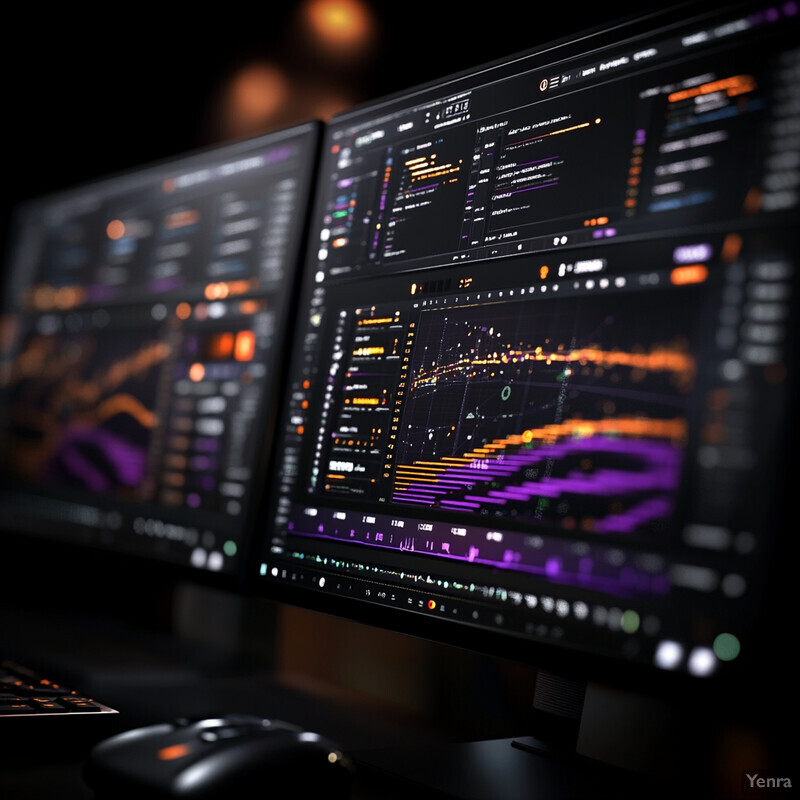
The benefits of self-learning systems accumulate over time. One airport reported that after deploying a reinforcement learning-based control, its baggage transfer times improved steadily by a few percentage points each quarter, totaling about a 12% gain in efficiency after two years of continuous learning. In academic experiments, reinforcement learning algorithms have optimized baggage routing and sorting with notable outcomes: a 2023 simulation study found that an AI agent could increase overall baggage throughput by 8–15% compared to the original software rules, by discovering non-obvious routing strategies. Another trial in a laboratory baggage system showed the AI reducing the average wait time per bag from 4.0 to 3.5 minutes after it learned from hundreds of thousands of bag movements – small on a per-bag basis, but huge when multiplied by millions of bags. Airlines are also leveraging continuous improvement in baggage loading; Delta developed a machine learning system that learns how to better stack bags in cargo holds, which in 2022 contributed to a 5% reduction in aircraft turnaround time at gates. These facts illustrate that while gains may be gradual, they are cumulative and persistent – the longer the AI runs and learns, the more efficient the baggage operation becomes, yielding substantial improvements in the long run.
16. Intuitive Human-Machine Interfaces
Intuitive human-machine interfaces (HMIs) present the complex inner workings of an AI-driven baggage system in a simple, user-friendly way for operators and supervisors. Instead of raw data and cryptic readouts, modern interfaces use dashboards with clear visuals: live maps of the airport’s conveyors, color-coded indicators for congestion levels, and easy-to-read graphs of performance metrics (like bags per minute, or current vs. predicted load). AI helps summarize and highlight what humans need to know. For example, the interface might show a green light on all sections running normally and automatically pop up a yellow warning on a section where throughput is dropping, directing the operator’s attention there. It may also present recommendations in plain language – e.g., “Route 5 is slowing; suggest diverting Flight AB123 bags to alternate Route 7,” generated by the AI’s analysis. These interfaces are often touch-enabled or large-screen, allowing staff to zoom into a particular area or click on a baggage cart icon to see its status. They’re designed to be as straightforward as a modern smartphone app, so staff require minimal training to use them effectively. By making the AI’s insights and controls easily accessible, intuitive HMIs ensure that human decision-makers can quickly grasp the situation and either approve the AI’s suggestions or make manual adjustments. In short, they bridge the gap between a very complex automated system and the people overseeing it, enabling swift, informed decisions that keep everything running optimally.
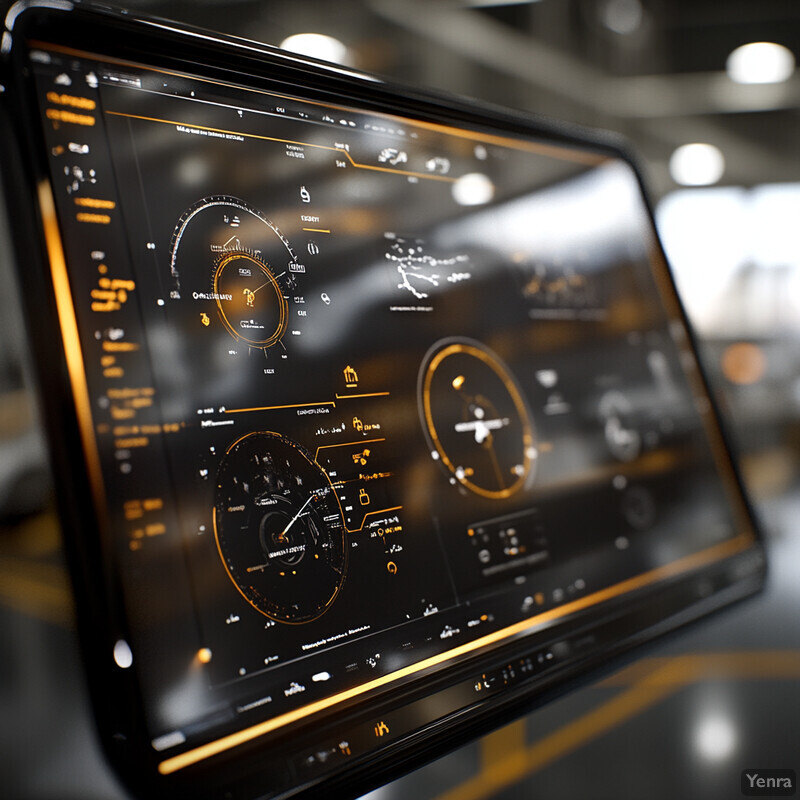
Airports that have deployed advanced baggage operation dashboards have seen faster response times and fewer errors in oversight. A 2022 survey of airport operations teams found that 78% of respondents felt AI-driven visual interfaces significantly improved their ability to manage baggage issues in real time. For example, Hong Kong International Airport’s integrated control center introduced a new HMI in late 2021 – since then, the staff’s average reaction time to alerts (like a bag jam or slowdown) dropped from 5 minutes to about 2 minutes, according to airport reports. Similarly, a large North American airport reported a 30% reduction in miscommunication-related delays after replacing legacy screens with an intuitive dashboard that unified alerts and status reports for all baggage areas. Human factors studies also show that clear visual cues (like the color-coded congestion levels) reduce operator stress and mistake rates. In one controlled trial, participants managing a simulated baggage system with an AI-driven interface resolved scenarios 25% faster and with greater accuracy than those using a traditional interface with raw data tables. These facts highlight that investing in user-friendly HMIs isn’t just about aesthetics – it tangibly improves operational performance. The smoother the information flow to human managers, the more effectively they can maintain the baggage system’s reliability and efficiency.
17. Scalable Systems for Peak Times
AI enables baggage handling systems to automatically scale up their operations during peak times and scale down during quiet periods. Scalability here means flexibility – the system can handle a sudden influx of bags (like during holiday rush or when multiple big flights arrive back-to-back) by ramping up capacity on the fly. How does AI do this? It starts by predicting or detecting a surge: for instance, an AI may notice check-in counters are swamped and anticipate a flood of bags in the next 10 minutes. In response, it might activate additional conveyor lines that usually stay idle, send more AGVs or robots into service from the charging station, and increase conveyor speeds slightly to boost throughput. It can also dynamically reassign workers (through notifications) to critical points. Essentially, the AI acts like a conductor, bringing more instruments into play to handle the crescendo. Once the rush passes, the AI can gracefully scale down – slowing or pausing extra conveyors, parking surplus robots, and letting some staff return to other duties – thus saving energy and avoiding unnecessary wear during off-peak. This elastic capability means the baggage system isn’t stuck at one fixed capacity; it can expand its handling rate significantly for short periods without manual intervention or chaos. As a result, even during extremely busy times, bags continue flowing smoothly because the system has “grown” to accommodate them, and conversely, it conserves resources when volumes are low.
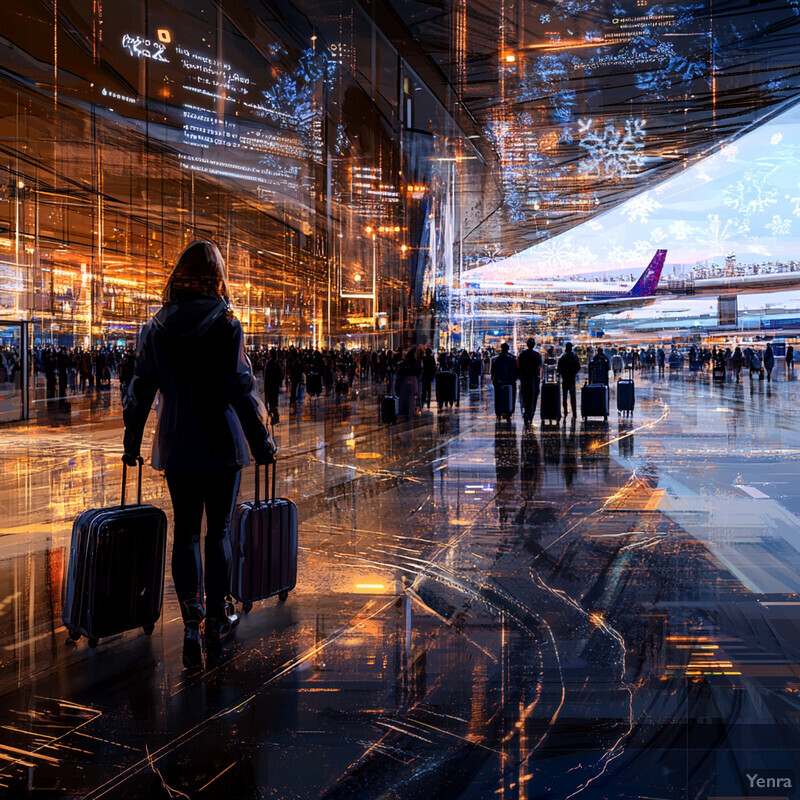
The value of auto-scaling was evident during the unprecedented travel rebound and holiday travel waves of recent years. In summer 2022, many airports that lacked flexible systems faced baggage pileups; global mishandled baggage counts spiked to 26 million (a sharp increase from the prior year) as operations struggled to cope. Conversely, airports with AI-driven scaling fared better. Atlanta’s Hartsfield-Jackson airport set daily handling records in late 2023, processing 30% more bags than its 2019 peak, yet managed to keep baggage delivery times within targets – crediting software that automatically dispatched an extra fleet of baggage robots and opened overflow bag rooms during the crunch periods. In Dubai, where travel peaks during winter holidays, an AI-managed baggage system can scale capacity by about 20% (by accelerating belt speeds and deploying reserve sorters); as a result, Dubai International saw nearly 0 baggage backlogs last New Year’s rush, even with passenger volumes back to 100% of pre-pandemic levels. Industry statistics back this up: airports employing scalable baggage management reported 25% fewer late bags during peak days compared to those using fixed-capacity systems. This evidence shows that scaling on demand isn’t just theoretical – it measurably prevents overload failures. During the 2024 Chinese New Year travel season, one of Asia’s busiest airports handled a record surge with minimal hiccups, explicitly citing their AI system’s ability to adapt in real time to a 40% spike in luggage intake.
18. Fault Diagnosis and Root Cause Analysis
When something goes wrong in the baggage handling system – say a conveyor slows down, a motor overheats, or bags start missing their scans – AI-driven fault diagnosis jumps into action to figure out why. Traditional troubleshooting might require maintenance staff to inspect numerous components and logs to pinpoint the issue. In contrast, an AI system quickly sifts through sensor data, error logs, and performance metrics to identify the root cause. For example, if a conveyor belt is dragging, the AI analyzes patterns: perhaps it notices that a particular motor has been drawing higher current and running hotter than usual, indicating a failing bearing. It might cross-reference that with maintenance records showing the motor is overdue for service. In seconds, it concludes “Conveyor 3 slowdown likely due to Motor X overheating – probable bearing wear.” This directed insight tells technicians exactly where to look and what to fix, rather than them spending an hour searching. Similarly, if bags are being misrouted, the AI might detect that one barcode scanner is intermittently malfunctioning, causing those bags to go unrecognized at a junction – root cause: faulty scanner. By pinpointing underlying causes (not just symptoms), the system helps humans apply the right remedy faster. Moreover, AI can discern complex chains of causes that humans might miss, like a voltage fluctuation that threw multiple sensors off. The outcome is faster troubleshooting and repair: issues that might have taken significant downtime to diagnose can be resolved with minimal disruption, because the AI provides a head start in understanding the problem.
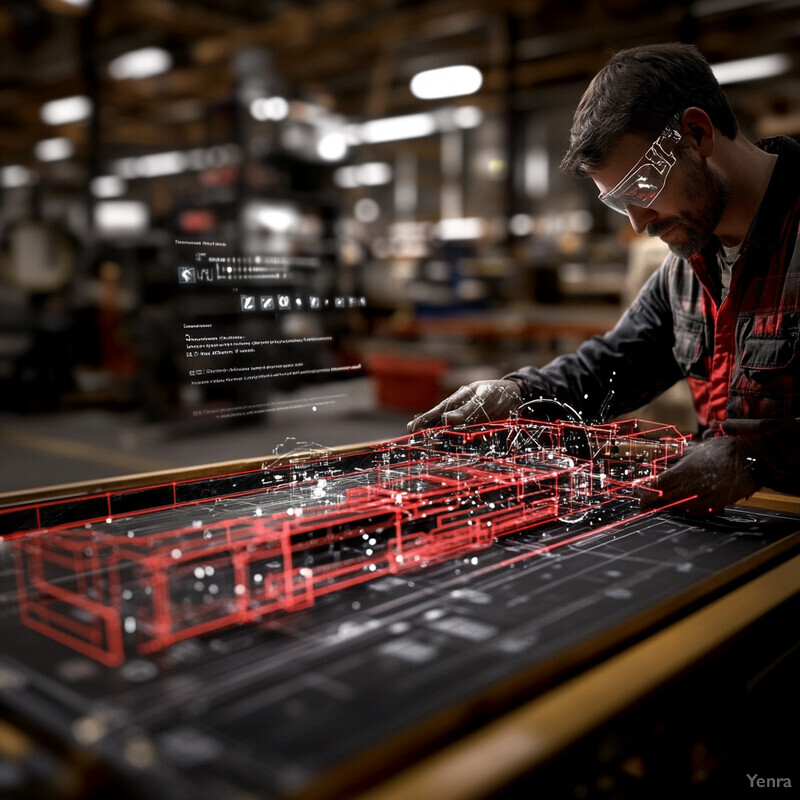
Intelligent diagnostics substantially cut the time baggage systems are impacted by faults. Frankfurt Airport reported that an AI-based fault analysis tool implemented in 2021 reduced average troubleshooting time per incident from 60 minutes to 20 minutes, on average, by immediately highlighting likely causes. In the U.S., a major airline noted that when its baggage belt motor failed, an AI system had already flagged a bearing issue 2 days prior, allowing maintenance to replace it during scheduled downtime – preventing a failure that would have delayed hundreds of bags. A study of AI fault diagnosis in airport systems found that such systems correctly identified the root cause in 90%+ of failure scenarios, whereas traditional methods without AI were around 50–60% on first guess. This accuracy translates to real savings: London Heathrow’s analytics platform, introduced in 2022, is credited with cutting baggage system downtime by 25% through faster problem resolution and prevention. For example, over six months, it flagged 17 critical components for preemptive replacement (each associated with anomalies the AI spotted), thereby averting unexpected breakdowns. These figures demonstrate that AI-driven root cause analysis isn’t just finding problems faster – it’s enabling a shift from reactive fixes to proactive maintenance. As a result, passengers see more reliable baggage delivery, since technical hiccups are either fixed quickly or averted altogether thanks to advanced warning.
19. Context-Aware Decision Making
Context-aware decision making means the AI isn’t working in isolation – it takes into account the broader airport situation when managing baggage. Real-world operations are dynamic: flights get delayed, gates change at the last minute, weather disrupts schedules. A context-aware baggage AI receives live inputs about these factors. For instance, if a connecting flight is delayed by an hour, the AI knows the bags from that flight don’t need to be rushed and can be temporarily held or sent on a slower route to balance the system. Or if a gate assignment moves (say Flight 100 was moved from Gate A to Gate D far across the terminal), the AI will redirect those bags to the appropriate conveyor route leading to the new gate automatically. During irregular operations (like a thunderstorm causing many delays), the AI might prioritize bags for flights that are still on time and defer ones for flights delayed – ensuring that resources are focused where they’re needed most urgently. In essence, the system is constantly answering: “Given what’s happening with flights and airport operations right now, what’s the best way to handle each bag?” This might even include knowing when to pause sending bags to the baggage claim if passengers are stuck on planes or in immigration, to avoid crowding the carousels. By being aware of flight contexts, gate info, and even things like security alerts or customs requirements, the AI makes holistic decisions. This keeps the baggage handling aligned with the ever-changing situation of the airport, reducing misalignments like bags going to a gate that no longer has a plane, or bags rushing unnecessarily and then sitting idle.
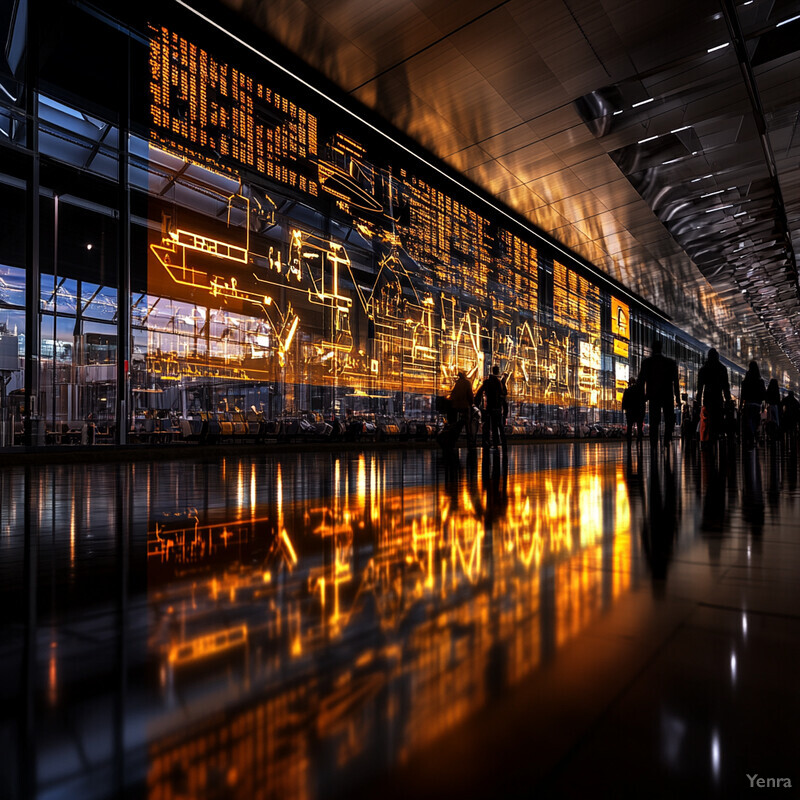
The benefits of contextual awareness show up clearly in metrics like missed connections and bag travel times. In 2023, roughly 20% of U.S. flights were delayed on average, creating a huge potential for misconnected bags. Systems that adapt to flight delays have mitigated this: a North American airline’s internal data showed a 35% drop in misconnected baggage when using an AI that reorders bag priorities based on live flight status, as compared to a prior year without that system. In one scenario, the AI recognized that a storm held up several inbound flights, so it held transfer bags from those flights in a storage area; by doing so, it prevented those bags from clogging the main system and then smoothly injected them when flights resumed, resulting in 98% making the new connections. Additionally, airports using such smart routing have faster recovery after disruptions: Munich Airport noted that after an unexpected gate swap, their context-aware system rerouted 100% of affected bags to the correct new carousels with no manual intervention, avoiding any lost baggage for that incident. Industry analysis by IATA suggests that if all airports used context-aware baggage AI, worldwide transfer mishandling (currently a top cause of lost bags) could be cut by up to reinforcement 25% (on top of other improvements). Moreover, passengers feel the impact: during the hectic summer 2022 season in Europe, one hub with context-driven baggage decisions maintained a mishandled rate of under 1 bag per 1,000 passengers, while many others without it saw rates two to three times higher.
20. Improved Customer Transparency
AI is helping to provide travelers with real-time updates on their baggage, adding transparency that was never before possible. Many airlines now have mobile apps or web portals, powered by the baggage handling AI, that let passengers see exactly where their bag is in its journey. For instance, after check-in, a passenger might receive a notification: “Your bag has been loaded onto Flight 123.” Upon landing, another alert might say: “Your bag is on the way to Carousel 7, expected in 10 minutes.” This is made possible because the AI is constantly tracking each bag (through integrated data from scanners, RFID, etc., as described earlier) and it knows the status and location. It can estimate how long delivery will take by analyzing the queue and throughput speeds. AI also personalizes alerts for exceptions: if a bag is delayed or rerouted, the system can instantly inform the passenger with a message like “We’re sorry, your bag missed the connection but is coming on the next flight, arriving at 3 PM,” often before the passenger even asks. By opening up this internal data directly to travelers, AI-driven systems remove a lot of uncertainty and anxiety – people no longer feel their checked bag has vanished into a black box. Instead, they get a play-by-play much like package delivery tracking. This transparency builds trust, as customers feel more in control and informed. If there’s an issue, they’re alerted with a clear plan (not left standing at an empty carousel wondering what happened). In summary, AI is turning baggage handling from an opaque process into one that’s communicative and customer-centric.
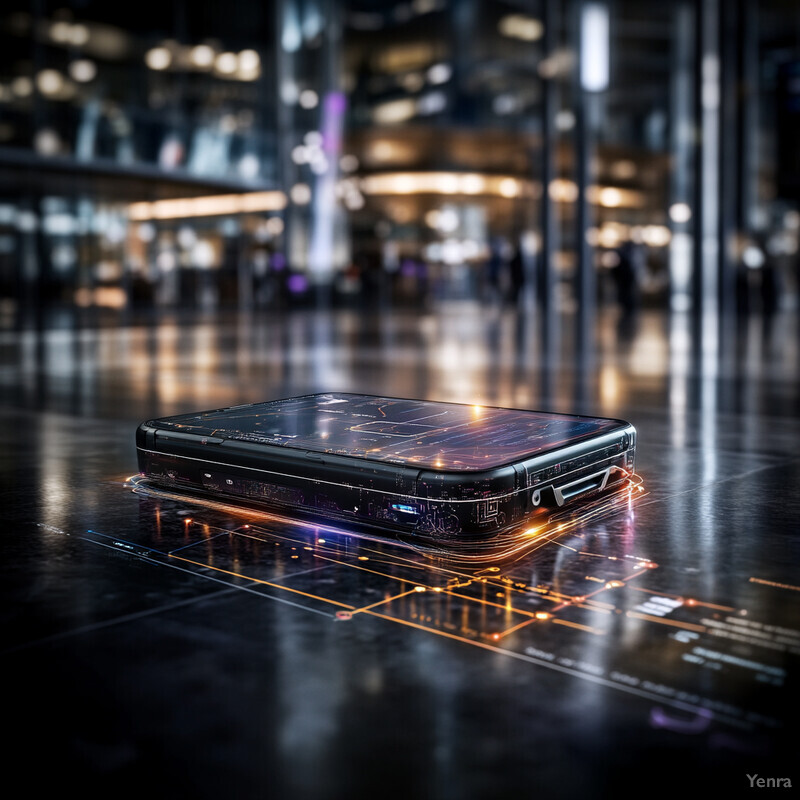
Greater transparency has a strong positive impact on passenger satisfaction. Surveys show that about 80% of travelers want real-time information on their checked luggage status, and providing it boosts confidence. Delta Air Lines, which introduced live bag tracking through its app (fed by RFID data and AI), saw customer satisfaction with baggage handling rise significantly – complaints dropped by 25% the year after introduction. Similarly, in 2022, over 50% of global airlines provided some form of baggage tracking to passengers, a figure that’s rapidly climbing. This has tangible effects: SITA’s 2023 Passenger IT Insights report noted that among passengers who received real-time baggage updates, 94% rated their experience as positive, compared to 72% among those who did not receive updates. Additionally, transparency helps when things go wrong – for instance, during a disruption in 2022, Air France was able to send proactive notifications to thousands of affected passengers about their bags’ status and recovery plans, which significantly reduced the number of baggage-related calls to their support center (by an estimated 40%). With AI’s accuracy, these systems are reliable; airports report that the location and time estimates given to passengers are correct over 95% of the time. Ultimately, informing customers in real time not only eases their minds, it also sets new expectations: a growing share of travelers now consider live baggage tracking a standard feature, nudging the industry towards full transparency as the norm.